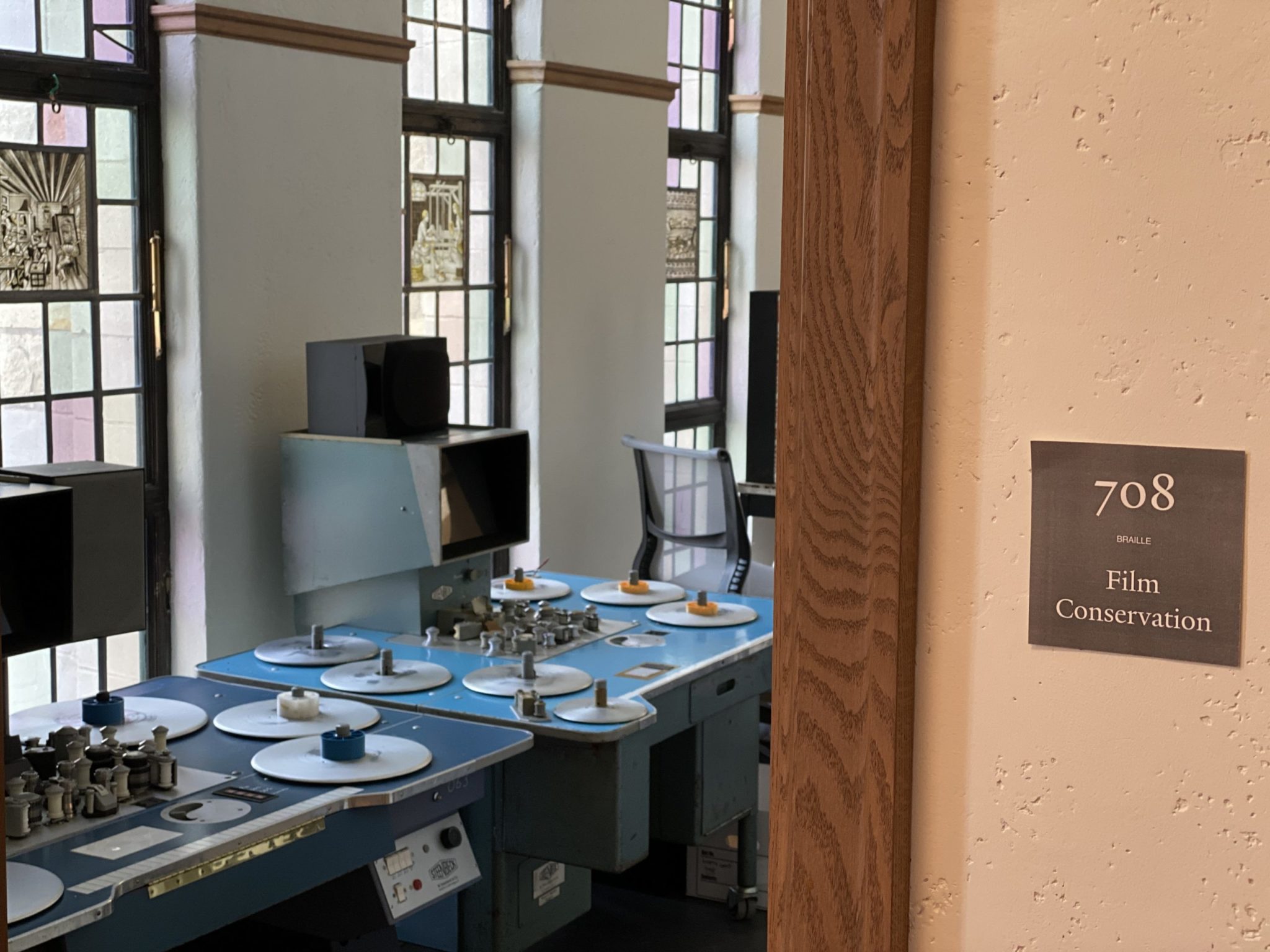Yale Film Archive opens in Sterling Memorial Library
With a new name and in a renovated space, Yale Film Archive opens its doors to the campus community, offering improved facilities and remarkable campus views.

Courtesy of Bob Handelman
On Sept. 1, Yale Film Archive opened in a newly renovated space on the seventh floor of Sterling Memorial Library.
The archive, formerly known as the Yale Film Study Center, was originally located in the lower level of the Whitney Humanities Center. Renovations for the archive’s new space began in spring 2020, and the equipment move-in process concluded this summer. Now called the Yale Film Archive, it serves the same function of promoting Yale’s vibrant film culture — through film collection, preservation and provision of public access — with advanced facilities.
“I think that the new name conveys a much clearer sense of who we are in relation to the standards and responsibilities of the international film community,” said Michael Kerbel, the director of the Film Archive. “It is much more fitting for the kind of work that we’ve been doing for a long time now.”
According to managing archivist Brian Meacham, the new location houses improved versions of the center’s original facilities. The 3,200-square-foot space at Sterling Memorial Library includes a film conservation area, customized viewing booths for multi-region DVDs, Blu-rays and cassettes, video collection stacks and a 23-seat screening room with projection capabilities for 16mm, 35mm and 3D films.
Though officially founded in 1982, the Film Archive’s origins trace back to 1968, when the University acquired 206 classic films as part of the John Griggs Collection. Since then, it has grown to include over 40,000 DVDs, 4,000 Blu-ray Discs and 6,000 VHS tapes.
“We want to enable students to encounter that material and to show that it has a shape, a texture and a smell,” Meacham said. “[Films are] a thing that people spent time, creativity and technical expertise on making and sharing. So, it is important to have such a resource for anybody who encounters film, whether through a class assignment or individual interest — they can count on the Film Archive’s assistance.”
Yale students can access the Film Archives’ extensive collections by requesting films and playback equipment online, or they can reserve the screening room. Kerbel noted that many faculty members and students use these resources to see films in their original format, creating a “unique optical experience.”
According to Patricia Carey, director of communications at Yale University Library, the Film Archive also serves as “a locus for film preservation.” It supports a wide range of classes and research with its collections, programs and staff expertise. Over the years, it has received more than a dozen grants from the National Film Preservation Foundation. These grants were used to preserve and restore works by filmmakers who studied at Yale.
The Film Archive team, which includes Meacham, just completed the preservation project for a short film titled “James Baldwin: From Another Place.” Shot by Sedat Pakay ART ’68, the film explores the writer’s exile in Turkey in the early 1970s. The film will be screened at the New York Film Festival on Sept. 26, and on Sept. 30 it will be shown at the Lincoln Center — the first Yale-preserved film to be presented there.
Typically, the Film Archive holds “preservation premieres” where it presents the recently preserved films to the Yale community. This program will be held next semester due to safety restrictions. The staff also plans to resume the “Treasures from the Yale Film Archive” series, in which they organize frequent screenings of classic and contemporary films from around the world in their original 35mm format.
“It is important to show these films on film and to preserve them on film, which is a very stable medium that will last hundreds of years without any need to be upgraded or require different operating systems and proprietary formats,” Meacham said. “Film is still film, and we are fortunate that we can screen and look at it.”
Another development for the Film Archive is the construction of two new screening spaces at the recently opened Humanities Quadrangle. Kerbel and Meacham noted that this expansion will contribute to the growing film community on campus.
“Over the years, our mission hasn’t changed,” Kerbel said. “The Film Archive promotes the culture and the art of film both on Yale’s campus and within the greater film community across the world.”
The Film Archive is currently working on preserving Willie Ruff’s ’53, ART ’54 “Tony Williams in Africa” and Alexis Krasilovsky’s ’71 “End of the Art World” — both supported by the National Film Preservation Foundation.








